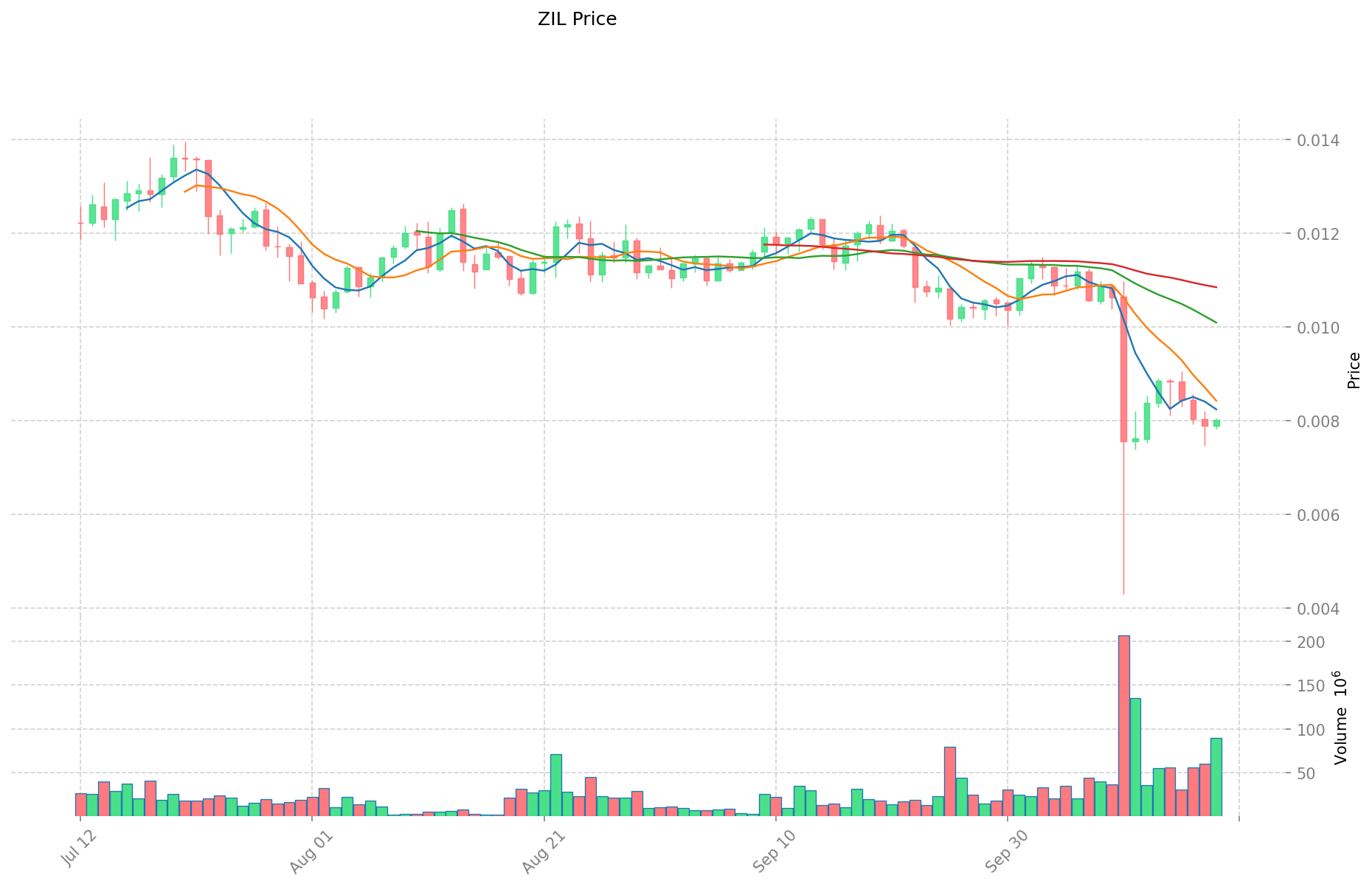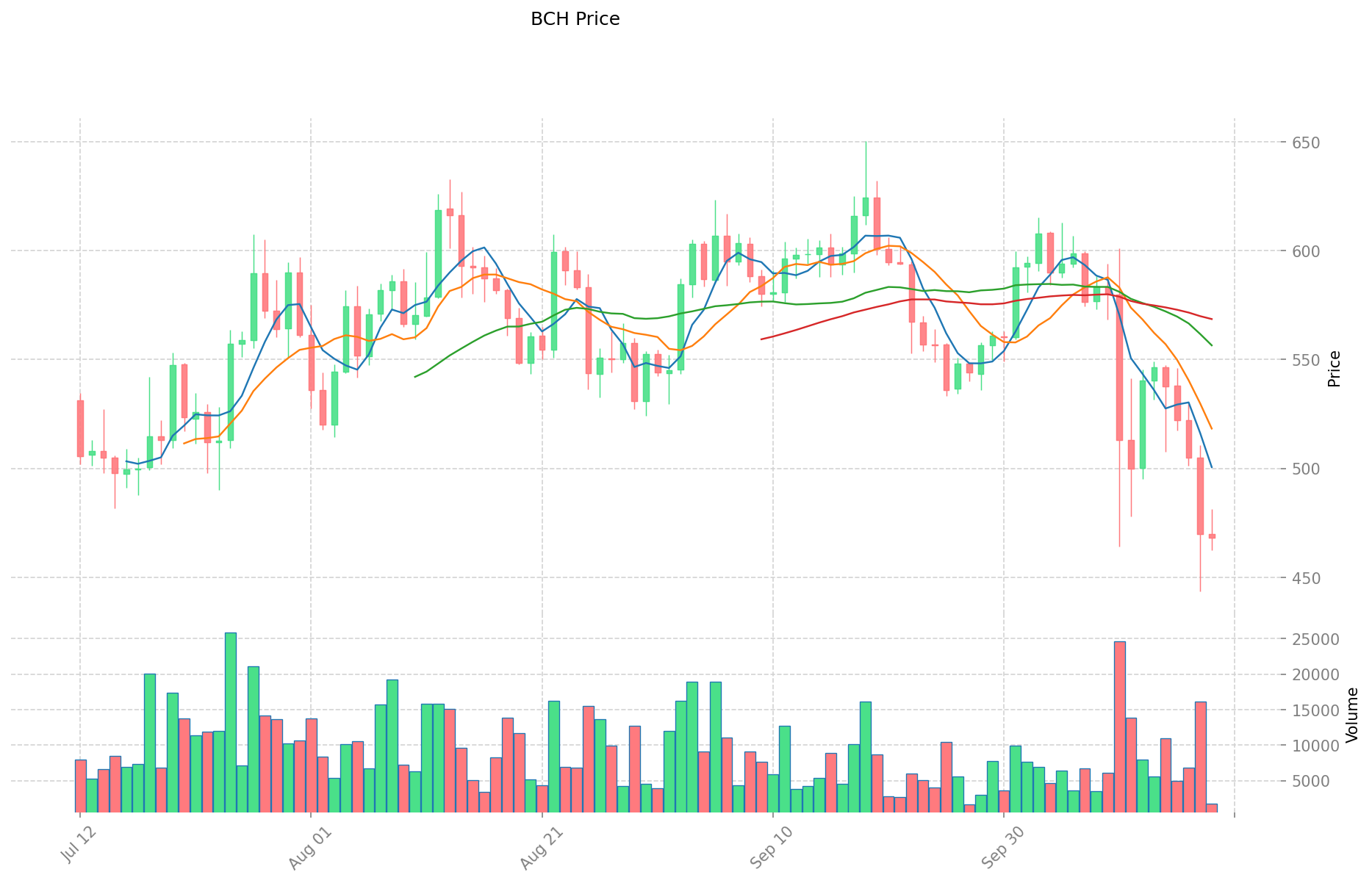ZIL vs BCH: Comparing the Scalability Solutions of Two Prominent Cryptocurrencies
Introduction: ZIL vs BCH Investment Comparison
In the cryptocurrency market, the comparison between Zilliqa and Bitcoin Cash has always been a topic that investors cannot ignore. The two not only have significant differences in market cap ranking, application scenarios, and price performance, but also represent different cryptocurrency positioning.
Zilliqa (ZIL): Since its launch in 2018, it has gained market recognition for its high-throughput public blockchain platform.
Bitcoin Cash (BCH): Since its inception in 2017, it has been hailed as a peer-to-peer electronic cash system, and is one of the cryptocurrencies with the highest global trading volume and market capitalization.
This article will comprehensively analyze the investment value comparison between ZIL and BCH, focusing on historical price trends, supply mechanisms, institutional adoption, technological ecosystems, and future predictions, and attempt to answer the question that investors are most concerned about:
"Which is the better buy right now?"
I. Price History Comparison and Current Market Status
ZIL (Coin A) and BCH (Coin B) Historical Price Trends
- 2021: ZIL reached its all-time high of $0.255376 on May 7, 2021, likely due to increased adoption and market optimism.
- 2017: BCH was created through a hard fork of Bitcoin on August 1, 2017, and reached its all-time high of $3,785.82 on December 20, 2017.
- Comparative analysis: During the market cycle, ZIL dropped from its all-time high of $0.255376 to a current price of $0.007975, while BCH fell from $3,785.82 to $466.87.
Current Market Situation (2025-10-19)
- ZIL current price: $0.007975
- BCH current price: $466.87
- 24-hour trading volume: $703,900.83 (ZIL) vs $835,798.47 (BCH)
- Market Sentiment Index (Fear & Greed Index): 23 (Extreme Fear)
Click to view real-time prices:
- Check ZIL current price Market Price
- Check BCH current price Market Price


II. Core Factors Affecting Investment Value of ZIL vs BCH
Supply Mechanism Comparison (Tokenomics)
- ZIL: Maximum supply capped at 21 billion ZIL with diminishing mining rewards
- BCH: Fixed supply of 21 million coins with halving mechanism every 4 years
- 📌 Historical pattern: Diminishing supply in both assets has historically created upward price pressure during periods of increased demand, with BCH following a more Bitcoin-like halving cycle.
Institutional Adoption and Market Applications
- Institutional holdings: BCH has greater institutional recognition with inclusion in more investment products and exchange listings
- Enterprise adoption: BCH maintains stronger positioning in payment systems and cross-border settlements while ZIL focuses on dApp development
- National policies: Both face varied regulatory approaches across jurisdictions, with BCH generally benefiting from greater regulatory clarity as a Bitcoin fork
Technical Development and Ecosystem Building
- ZIL technical upgrades: Zilliqa utilizes sharding technology for improved scalability and has implemented ZilBridge for cross-chain interoperability
- BCH technical development: Focuses on on-chain scaling through larger block sizes and transaction efficiency improvements
- Ecosystem comparison: ZIL offers stronger smart contract capabilities and NFT functionality, while BCH maintains advantages in payment adoption and merchant acceptance
Macroeconomic Factors and Market Cycles
- Performance during inflation: BCH positions itself as a store of value similar to Bitcoin, potentially offering inflation hedge properties
- Macroeconomic monetary policy: Both assets show correlation with broader crypto market reactions to Federal Reserve decisions and monetary policy shifts
- Geopolitical factors: BCH potentially benefits more from cross-border transaction demand due to its wider recognition and payment-focused development III. 2025-2030 Price Prediction: ZIL vs BCH
Short-term Prediction (2025)
- ZIL: Conservative $0.00446992 - $0.007982 | Optimistic $0.007982 - $0.01181336
- BCH: Conservative $326.83 - $466.9 | Optimistic $466.9 - $569.618
Mid-term Prediction (2027)
- ZIL may enter a growth phase, with estimated prices of $0.01056082456 - $0.01186731832
- BCH may enter a growth phase, with estimated prices of $458.8665186 - $694.33749525
- Key drivers: Institutional capital inflow, ETF, ecosystem development
Long-term Prediction (2030)
- ZIL: Base scenario $0.011952225444159 - $0.014223148278549 | Optimistic scenario $0.014223148278549+
- BCH: Base scenario $869.57092061371875 - $1026.093686324188125 | Optimistic scenario $1026.093686324188125+
Disclaimer: This analysis is based on historical data and market projections. Cryptocurrency markets are highly volatile and unpredictable. This information should not be considered as financial advice. Always conduct your own research before making investment decisions.
ZIL:
| 年份 | 预测最高价 | 预测平均价格 | 预测最低价 | 涨跌幅 |
|---|---|---|---|---|
| 2025 | 0.01181336 | 0.007982 | 0.00446992 | 0 |
| 2026 | 0.011877216 | 0.00989768 | 0.0053447472 | 24 |
| 2027 | 0.01186731832 | 0.010887448 | 0.01056082456 | 36 |
| 2028 | 0.0117187046548 | 0.01137738316 | 0.0058024654116 | 42 |
| 2029 | 0.012356406980918 | 0.0115480439074 | 0.010739680833882 | 44 |
| 2030 | 0.014223148278549 | 0.011952225444159 | 0.007290857520936 | 49 |
BCH:
| 年份 | 预测最高价 | 预测平均价格 | 预测最低价 | 涨跌幅 |
|---|---|---|---|---|
| 2025 | 569.618 | 466.9 | 326.83 | 0 |
| 2026 | 689.28447 | 518.259 | 393.87684 | 10 |
| 2027 | 694.33749525 | 603.771735 | 458.8665186 | 29 |
| 2028 | 843.7709996625 | 649.054615125 | 467.31932289 | 38 |
| 2029 | 992.7290338336875 | 746.41280739375 | 500.0965809538125 | 59 |
| 2030 | 1026.093686324188125 | 869.57092061371875 | 817.396665376895625 | 85 |
IV. Investment Strategy Comparison: ZIL vs BCH
Long-term vs Short-term Investment Strategies
- ZIL: Suitable for investors focused on ecosystem potential and dApp development
- BCH: Suitable for investors seeking payment solutions and potential store of value
Risk Management and Asset Allocation
- Conservative investors: ZIL: 30% vs BCH: 70%
- Aggressive investors: ZIL: 60% vs BCH: 40%
- Hedging tools: Stablecoin allocation, options, cross-currency portfolios
V. Potential Risk Comparison
Market Risks
- ZIL: Higher volatility due to lower market cap and trading volume
- BCH: Susceptible to broader crypto market trends and Bitcoin price movements
Technical Risks
- ZIL: Scalability, network stability
- BCH: Mining centralization, security vulnerabilities
Regulatory Risks
- Global regulatory policies may have differing impacts on both assets
VI. Conclusion: Which Is the Better Buy?
📌 Investment Value Summary:
- ZIL advantages: Strong focus on scalability, smart contract capabilities, and ecosystem development
- BCH advantages: Wider recognition, established payment network, and potential store of value properties
✅ Investment Advice:
- Novice investors: Consider a balanced approach with a slight preference for BCH due to its established market presence
- Experienced investors: Explore opportunities in ZIL's ecosystem while maintaining exposure to BCH
- Institutional investors: Evaluate BCH for portfolio diversification and ZIL for potential growth in the smart contract space
⚠️ Risk Warning: The cryptocurrency market is highly volatile. This article does not constitute investment advice. None
VII. FAQ
Q1: What are the main differences between ZIL and BCH? A: ZIL is a high-throughput blockchain platform focused on scalability and smart contracts, while BCH is a peer-to-peer electronic cash system forked from Bitcoin. ZIL has a maximum supply of 21 billion coins, while BCH has a fixed supply of 21 million coins.
Q2: Which coin has performed better historically? A: BCH reached a higher all-time high of $3,785.82 in December 2017, compared to ZIL's all-time high of $0.255376 in May 2021. However, both have experienced significant price drops since their peaks.
Q3: How do the supply mechanisms of ZIL and BCH differ? A: ZIL has a maximum supply of 21 billion coins with diminishing mining rewards, while BCH has a fixed supply of 21 million coins with a halving mechanism every 4 years, similar to Bitcoin.
Q4: Which coin has greater institutional adoption? A: BCH generally has greater institutional recognition, with inclusion in more investment products and exchange listings compared to ZIL.
Q5: What are the key technical features of each coin? A: ZIL utilizes sharding technology for improved scalability and has implemented ZilBridge for cross-chain interoperability. BCH focuses on on-chain scaling through larger block sizes and transaction efficiency improvements.
Q6: How do the long-term price predictions compare for ZIL and BCH? A: By 2030, ZIL's base scenario price range is predicted to be $0.011952225444159 - $0.014223148278549, while BCH's base scenario range is $869.57092061371875 - $1026.093686324188125.
Q7: Which coin might be better for different types of investors? A: ZIL may be more suitable for investors focused on ecosystem potential and dApp development, while BCH may be better for those seeking payment solutions and a potential store of value. Conservative investors might consider a 30% ZIL / 70% BCH allocation, while aggressive investors might opt for 60% ZIL / 40% BCH.